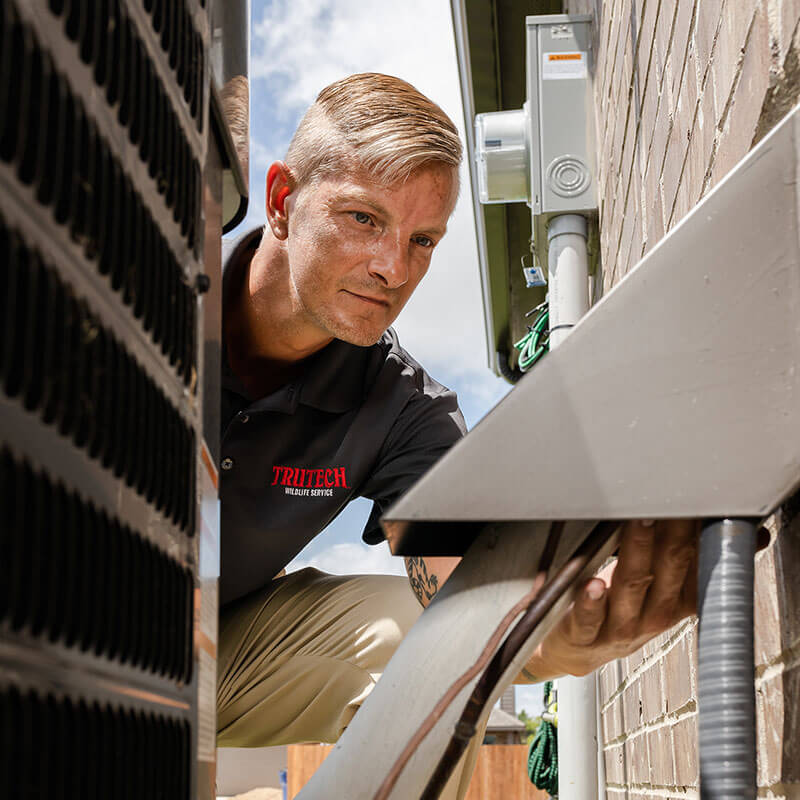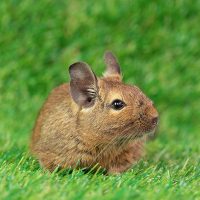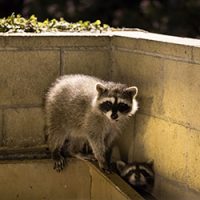Chapel Hill Wildlife Removal
Some Geographic Restrictions
Wildlife We Remove in Chapel Hill, NC
Located in Piedmont, Chapel Hill is surrounded by rolling, forested hills. Habitats in the Piedmont include old fields, rock outcrops, streams, and woodlands where species diversity is high. The Cape Fear River Basin provides plenty of water for animals. Habitat loss and fragmentation due to development is the biggest threat to wildlife in North Carolina. And as this popular college town grows with the surrounding area, wildlife interactions with humans will increase.
Wild animals have the same basic needs as people and search for resources for food, shelter, and water. Some animals like raccoons, squirrels, bats, skunks, and opossums have adapted to live near people. Wildlife typically takes up residence in areas uninhabited by people so it can be difficult to see the animal. Homeowners typically notice strange sounds or smells. Other signs of a wildlife infestation include tracks, paw prints, and droppings.
Although seeing wildlife in their natural habitat is beautiful, sharing your home with a wild animal is not. Instead, the threat of property damage and a suite of potential health hazards necessitates removing the nuisance wildlife as soon as possible.
When it comes to wildlife removal in Orange and Lee County, you want the most effective and safest method possible, which is why you’ll want to call Trutech.
Common Nuisance Wildlife
Chapel Hill Wildlife Removal Services
Trutech Wildlife Service has been helping both homeowners and commercial businesses protect property and public health from nuisance wildlife for decades. With a focus on the best customer experience possible, we work efficiently protect properties from unwelcome wildlife.
Here’s what to expect when working with Trutech:
Step 1: Inspection
When a Trutech technician arrives at your home, we will start by asking questions about your experience with the nuisance wildlife at hand.
Once we have a firm grasp on the issues facing the property owner, a thorough inspection of the interior and exterior of the home begins. This includes looking at the attic, crawlspace, roof, and any possible entry points.
Since each species and home is different, the length of the inspection can vary. It can take between 30 minutes to 3 hours to accurately evaluate the extent of the wildlife nuisance issue.
Step 2: The Plan
With the results of the inspection, we share our findings with you. And share how we will solve the problem for you.
Although each wildlife control plan is unique to the home, it may include live trapping, direct capture, one-way doors, or deterrents. Before any work begins, we make sure that you are comfortable with the steps being taken to resolve the nuisance wildlife issue.
Step 3: Get To Work
If you approve of the plan, we will set up a time to put it into place. After the animal removal has taken place, we will repair any damage caused by the critter. Additionally, we will apply sanitizing and ectoparasite agents to the affected areas. Once the plan is executed, your home will be returned to its normal condition.
Wildlife removal is just one part of the plan. Many plans include wildlife control measures to prevent any future problems. This is often completed by installing a full home exclusion. The goal is to create physical barriers to prevent animals from entering your home in the future.
A few possible exclusion techniques include gable vents, ridge vents, crawlspace vents, roof returns, and plumbing stacks. With the appropriate exclusions in place, you can rest easy knowing that a long-term solution is in place to protect your home from nuisance wildlife.
Once installed, Trutech offers a one-year warranty on full home exclusions. Plus, there is a 100% satisfaction guarantee. If you aren’t satisfied with the initial work, Trutech will send out a service manager to inspect the work completed and make any necessary adjustments.

Some Geographic Restrictions
Common Wildlife in Chapel Hill
Raccoon Removal
Raccoons inhabit all parts of the state, tend to stay near a reliable source of water, and are comfortable in urban areas. Raccoons can wreak havoc trying to gain entry to your home and cause significant damage creating a den in your attic. They can cause a mess of garbage and destroy home gardens and birdfeeders. Because they are nocturnal, you’ll most likely hear a loud thumbing at night if you have an attic.
Live trapping is the most common removal technique and exclusion techniques repair raccoon damage and sealing areas like roof returns and gable vents.
Rodent Pest Control
A mouse or rat infestation can damage your home and harm your health. Rats like all rodents constantly gnaw and will gnaw on anything it can sink their teeth into. Rats can spread a variety of diseases.
To effectively get rid of rodents you need to control the population. Female rats can have six litters in one year. The wildlife technician will determine the best type of trap, placement of trap, and the best bait to use.
The standard trapping duration is normally 5-14 days. Rats leave pheromone trails that other rats can follow into your home. It is essential to repair entry points and reinforce potential entry points to keep rats out.
Opossum Removal
Opossums are not prone to aggression. They pose the greatest threat to your garden, but they will eat almost anything. Opossums do carry diseases so do not approach them haphazardly. Opossums will also look for safe nesting areas under decks, inside garages, or under foundations. Sealing ground-level entrances and burying wire mesh are effective ways to exclude opossums.
Squirrel Removal
Of the four squirrels that inhabit North Carolina, the eastern gray squirrel and the southern flying squirrel are most likely to enter your home. The fox squirrel’s range does include Wake County but they are not as common.
If you hear scratching noises that start early in the morning, it is likely a squirrel. Squirrels damage your home by constantly gnawing, building nests, and leaving their droppings. Effective squirrel control includes trapping, removing, and preventing squirrel infestations.
Chipmunk Control
Chipmunks are most active in early mornings and late afternoons during the spring. Chipmunks mate twice a year. The first litter of two to five kits is born in April and May; the second litter in July and August. Chipmunks enter their burrows during the winter months in a “quasi-hibernation“.
Chipmunks pose no real danger to humans. They rarely enter homes but will explore basements and crawlspaces for food. The more pressing threat is damage to lawns and gardens. Their burrows are quite extensive that include eas for sleeping, storing food, defecating, and giving birth.
Snake Control
Generally, the most harm snakes inflict is scaring someone. Out of the thirty-eight snake species in North Carolina, only six are venomous.
Most commonly, snakes enter your home searching for food. A snake in your home is a sign you have a rodent infestation. During the inspection, we look for signs of rodents. We can solve your snake and rodent problems.
Bird Control
The most common nuisance birds in North Carolina are crows, pigeons, red-winged blackbirds, starlings, and woodpeckers. Birds can be noisy, messy, and destructive. Effective bird control depends on species and legalities. Of the 475 wild bird species in North Carolina, only non-native birds to North America like pigeons, starlings, and house sparrows can legally be caught and trapped.
Effective bird control includes habitat modification, exclusions, repellents, and trapping. Trapping birds are difficult; prevention and exclusion are much more effective to get rid of nuisance birds.
Bat Removal
Property owners may discover bats roosting in attics, using these shelters to give birth. The mating season in North Carolina is from May 1 to July 31. During that time, it is illegal for residents to remove bats.
The most humane method of bat removal is to install a bat valve and perform a whole home exclusion. Once the pups can survive and fly on their own, we can start bat removal.
Bats can leave through the valve but not return. It usually takes 3-7 days to have a bat-free attic. Once all bats are gone, we remove the bat valve and seal the entire home.
Burrowing Animals
Homeowners can find chipmunks, moles, voles, or groundhogs digging up their yards. Moles, voles, and groundhogs make different size holes and mounds. That is the easiest way to identify them.
Traps can effectively control these animals, but they are elusive. Fencing around landscaping and gardens is an effective exclusion tactic.
Who We Are
Trutech Wildlife Technicians are equipped to handle any nuisance wildlife in your home or business. They will safely remove any attic invaders like raccoons, rats, mice, and squirrels and protect your lawn from skunks, opossums, chipmunks, and armadillos. Trutech can also protect your lawn and home from stinging insects like wasps, hornets, bees, mosquitos, and fire ants.
When you encounter unwanted wildlife in your home or business it is important to resolve the problem quickly and professionally. At Trutech®, our expert technicians and specialists have over 100 years of combined experience in the wildlife removal industry.
We know how to protect you and your family from the hazards of wildlife in your home or place of business.
Some Geographic Restrictions


Frequently Asked Questions
There is no one-size-fits-all solution; each job requires a custom approach. We inspect every home and build a custom plan to resolve any wildlife problems. We use a variety of techniques including cage traps, direct capture, one-way valves, and deterrents. Exclusion techniques are the most effective way to get rid of animals.
We provide customized solutions to each individual customer so that we may solve the issue as quickly, efficiently, and cost-effectively as possible. The size of the house, type of animal, number of nuisance animals, and length of time of infestation affect the estimated price of wildlife removal.
An estimate may change based on the amount of animal activity or work needed to be done. All estimates are finalized with an exact price before any work begins.
Our goal is to remove any wildlife as humanely as possible — often that means catching and releasing the animal.
Trutech® does not hire subcontractors for animal removal services. We employ expert technicians who are provided ongoing education and training in all aspects of animal control and removal. Many of our technicians hold degrees in Wildlife Biology, Entomology (insects), Ornithology (birds) or Herpetology (reptiles), some with Masters degrees in their specialty field.
Yes! We are licensed and insured.
We start by first removing the wildlife on your property, and cleaning up any damage. From there we’ll work with you to create a customized prevention plan so you won’t have the same issue again.
Typically an animal dies in your home because it became trapped in a hard-to-reach and hidden area. Our expert technicians have the experience and knowledge to find it and then safely remove the carcass from your home.
Our Wildlife Technicians use a pet-safe odor eliminator made of natural organisms and enzymes that consume decaying organic odor-causing matter, eliminating the source of the lingering odor. We use aerosols, oxidizing agents, foggers, and disinfectants with germicides to deodorize until nature completes this task for you.
You should consider a full home exclusion after the smell has been neutralized. Nuisance wildlife found its way into your house once. That entrance leaves your home vulnerable to future animal infestations. Full home exclusions are the most effective form of wildlife control.







